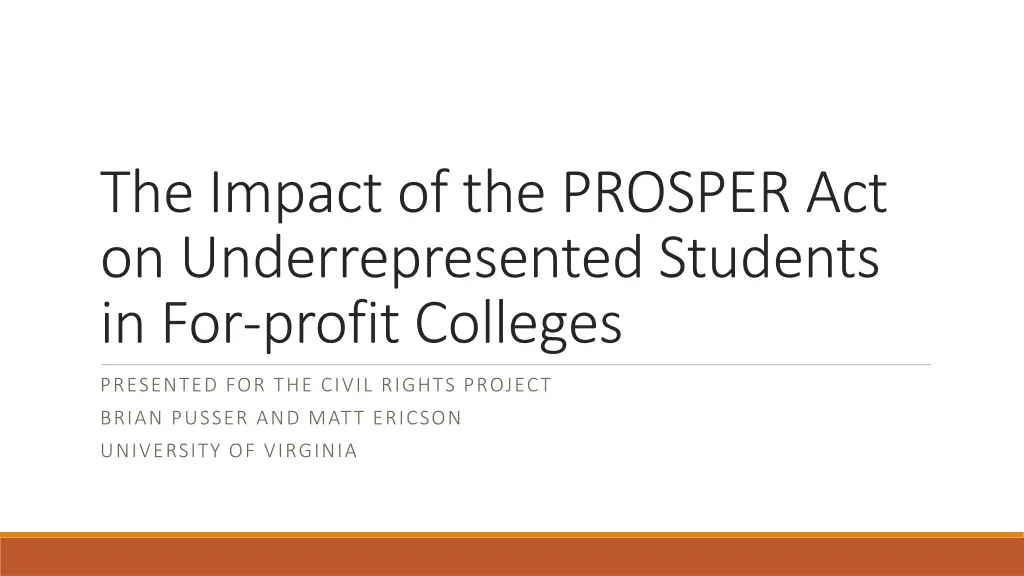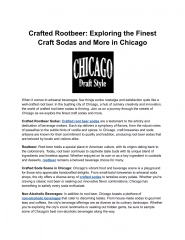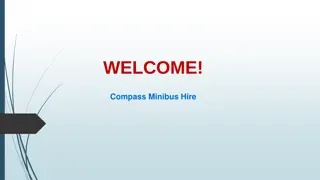
Impact of the PROSPER Act on Underrepresented Students in For-profit Colleges
Explore the impact of the PROSPER Act on underrepresented students in for-profit colleges, focusing on enrollment, demographics, graduation rates, and congressional recommendations for protecting vulnerable student populations in higher education.
Download Presentation

Please find below an Image/Link to download the presentation.
The content on the website is provided AS IS for your information and personal use only. It may not be sold, licensed, or shared on other websites without obtaining consent from the author. If you encounter any issues during the download, it is possible that the publisher has removed the file from their server.
You are allowed to download the files provided on this website for personal or commercial use, subject to the condition that they are used lawfully. All files are the property of their respective owners.
The content on the website is provided AS IS for your information and personal use only. It may not be sold, licensed, or shared on other websites without obtaining consent from the author.
E N D
Presentation Transcript
The Impact of the PROSPER Act on Underrepresented Students in For-profit Colleges PRESENTED FOR THE CIVIL RIGHTS PROJECT BRIAN PUSSER AND MATT ERICSON UNIVERSITY OF VIRGINIA
Total Enrollment for all Students at Four-Year Institutions in 2014 16,000,000 14,000,000 12,000,000 10,000,000 8,000,000 6,000,000 4,000,000 2,000,000 0 Total Public Private For-Profit Source: NCES, Table 303.25
Student Demographics at 4-Year Colleges in 2016 70.0 60.0 50.0 40.0 30.0 20.0 10.0 0.0 White Black Hispanic Asian Pacific Am Indian Bi-racial Public Private For-Profit Source: NCES Table 306.50 Total fall enrollment in degree-granting postsecondary institutions, by control and classification of institution, level of enrollment, and race/ethnicity of student: 2016
Graduation Rates by Race Within 6 Years at 4-year Institutions by Institution Type 90.0 80.0 70.0 60.0 50.0 40.0 30.0 20.0 10.0 0.0 Total White Black Hispanic For-Profit Asian American Indian Public Private Source: NCES, Table 326.10
Percentage of Students in Four-Year Institutions and Share of Defaults 2014 70 60 50 40 30 20 10 0 Public Private For-Profit % of Students Share of Defaults Source: NCES, Table 303.25 and Federal Student Aid Office of the U.S. Department of Education
What Congress Can Do To Protect Underrepresented Students in Higher Education Preserve the existing gainful employment and cohort default rate provisions in order to increase accountability Strengthen the 90/10 Rule by moving to an 85/15 model that includes revenue from service members and veterans using GI Bills Restore restrictions on incentive payments for recruiters Protect borrower defense rules and loan forgiveness programs Restore income contingent payment plans and develop other, evidence-based plans to ease loan repayment. Create financial incentives to increase student completion Support the provisions of the Aim Higher Act that would accomplish these goals






















